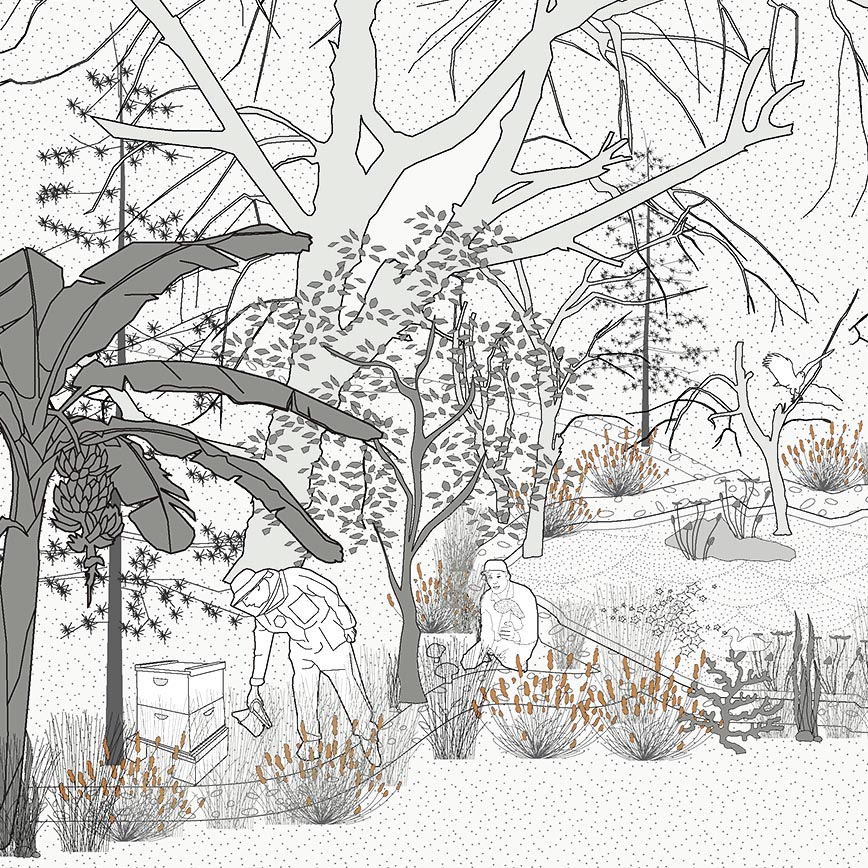Studio brief
The studio pivots on the link between the city, food and productive landscapes. Today, as many people live in cities depending on the food supply from far away areas, the link to food is invariably extensive and invisible, and the spatial connection to food is more relevant than ever.
Further, cities in India have seen unprecedented development in the last 10 years and a large influx of people from rural areas. Most cities’ ecological infrastructure and environment are stressed or severely damaged. To be specific, large areas of farmlands have been replaced, significant areas of forests cleared, pollution levels in cities have risen, and rivers and lakes are drying or are heavily polluted. The needs and lifestyles of our growing society put huge stress on environmental systems and natural cycles. These challenges compounded with climate change are an urgent one.
There has been a growing interest in different cities around the world to reshape our environment from the lens of food and ecology and yet planners and designers are often inadequately equipped to integrate food system thinking into future plans for cities. Thus, the studio invited students to conceive and generate innovative ideas of productive public realm centered on the themes of improved agricultural productivity, enhancement of biodiversity, and ecologically sensitive urban designs. These themes of ‘productivity’ should be dynamic to changes, coherently integrated within the open space network, and eventually absorbed as a part of the urban grain in an existing context.
Site
The studio takes the city of Gandhinagar as a lab to test out the principles of ecological intensification and urban agriculture. Often dubbed as one of the greenest cities in India, Gandhinagar comes with plenty of urban parks and neighbourhood gardens but also large percentage of vacant and unused public lands.
Within Gandhinagar the studio choses 3 sites:
A residential / commercial sector (makes up the bulk fabric of the city) – as living/ working spaces where the students will have to imagine an everyday landscape with productive uses incorporated in the grain. They also had the liberty to completely re-imagine a few sectors.
The central vista (becomes a new identity of the city for medium scale landscape) will emerge as a new vibrant public space that embraces productivity in all aspects – celebrating food with growing, harvesting, and feeding. This might be visualized as a one-stop destination for locals and tourists to immerse in a food scene in the heart of the city life.
The riverfront park patch (the new destination for large scale landscape) might be visualized as a ground for large radical strategies like growing grain crops, aquaculture, enhancement of riparian ecological zone, promoting biodiversity and architecture for innovative research and development, etc.




